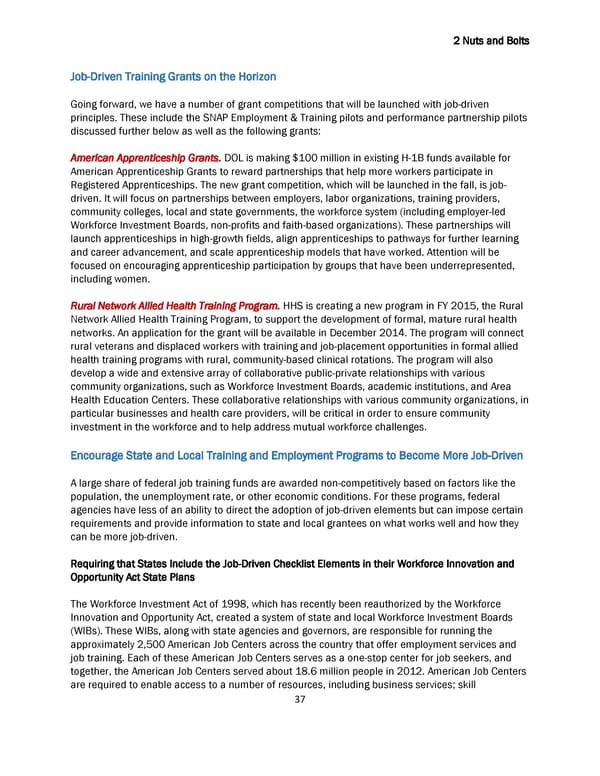2 Nuts and Bolts Job-Driven Training Grants on the Horizon Going forward, we have a number of grant competitions that will be launched with job-driven principles. These include the SNAP Employment & Training pilots and performance partnership pilots discussed further below as well as the following grants: American Apprenticeship Grants. DOL is making $100 million in existing H-1B funds available for American Apprenticeship Grants to reward partnerships that help more workers participate in Registered Apprenticeships. The new grant competition, which will be launched in the fall, is job- driven. It will focus on partnerships between employers, labor organizations, training providers, community colleges, local and state governments, the workforce system (including employer-led Workforce Investment Boards, non-profits and faith-based organizations). These partnerships will launch apprenticeships in high-growth fields, align apprenticeships to pathways for further learning and career advancement, and scale apprenticeship models that have worked. Attention will be focused on encouraging apprenticeship participation by groups that have been underrepresented, including women. Rural Network Allied Health Training Program. HHS is creating a new program in FY 2015, the Rural Network Allied Health Training Program, to support the development of formal, mature rural health networks. An application for the grant will be available in December 2014. The program will connect rural veterans and displaced workers with training and job-placement opportunities in formal allied health training programs with rural, community-based clinical rotations. The program will also develop a wide and extensive array of collaborative public-private relationships with various community organizations, such as Workforce Investment Boards, academic institutions, and Area Health Education Centers. These collaborative relationships with various community organizations, in particular businesses and health care providers, will be critical in order to ensure community investment in the workforce and to help address mutual workforce challenges. Encourage State and Local Training and Employment Programs to Become More Job-Driven A large share of federal job training funds are awarded non-competitively based on factors like the population, the unemployment rate, or other economic conditions. For these programs, federal agencies have less of an ability to direct the adoption of job-driven elements but can impose certain requirements and provide information to state and local grantees on what works well and how they can be more job-driven. Requiring that States Include the Job-Driven Checklist Elements in their Workforce Innovation and Opportunity Act State Plans The Workforce Investment Act of 1998, which has recently been reauthorized by the Workforce Innovation and Opportunity Act, created a system of state and local Workforce Investment Boards (WIBs). These WIBs, along with state agencies and governors, are responsible for running the approximately 2,500 American Job Centers across the country that offer employment services and job training. Each of these American Job Centers serves as a one-stop center for job seekers, and together, the American Job Centers served about 18.6 million people in 2012. American Job Centers are required to enable access to a number of resources, including business services; skill 37
 Biden Ready to Work White Paper 7/22/14 Page 36 Page 38
Biden Ready to Work White Paper 7/22/14 Page 36 Page 38